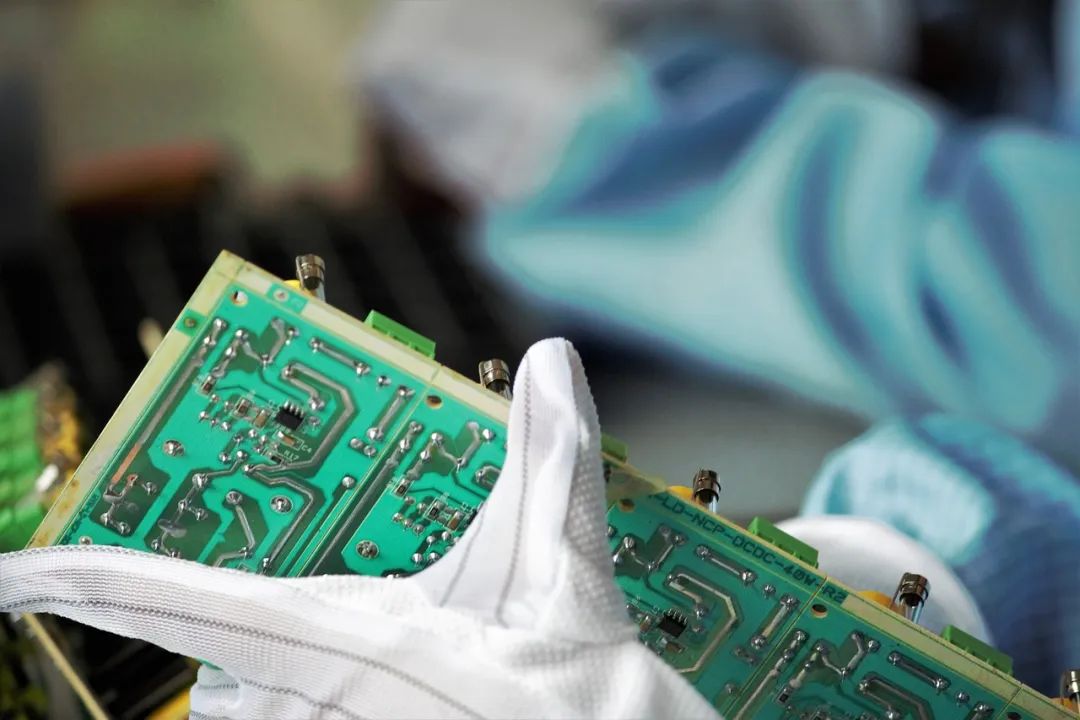 Following Horizon Robotics and Black Sesame, another domestic chip company has made breakthroughs in the automotive-grade RISC-V sector.Recently, Zhongwei Semiconductor disclosed in its investor relations activity record that the company achieved an operating income of approximately 910 million yuan in 2024, a year-on-year increase of nearly 30%, with a gross margin rebounding to nearly 30%, successfully turning losses into profits, with a net profit of 135 million yuan.The company has driven product structure optimization through high-intensity R&D investment(annual R&D expenses increased by over 70% year-on-year), focusing on high value-added fields such as industrial control and automotive electronics, while effectively reducing inventory levels, laying a foundation for future growth.
Following Horizon Robotics and Black Sesame, another domestic chip company has made breakthroughs in the automotive-grade RISC-V sector.Recently, Zhongwei Semiconductor disclosed in its investor relations activity record that the company achieved an operating income of approximately 910 million yuan in 2024, a year-on-year increase of nearly 30%, with a gross margin rebounding to nearly 30%, successfully turning losses into profits, with a net profit of 135 million yuan.The company has driven product structure optimization through high-intensity R&D investment(annual R&D expenses increased by over 70% year-on-year), focusing on high value-added fields such as industrial control and automotive electronics, while effectively reducing inventory levels, laying a foundation for future growth.
01/
Revenue Structure: Consumer Electronics Account for 40%, Automotive Business Becomes New Growth Engine
In terms of sectors, the company’s revenue structure shows a diversified characteristic:
-
Consumer Electronics: accounting for about 40%, still the main source of revenue for the company, with products covering small appliances, wireless charging, and other fields;
-
Home Appliances: accounting for over 30%, centered around 8-bit MCUs, consolidating traditional advantageous markets;
-
Industrial Control: accounting for over 20%, with revenue from brushless motor control and driver chips nearly doubling year-on-year, achieving breakthroughs in emerging scenarios such as AI servers and robotics;
-
Automotive Electronics: accounting for 4%-5%, although the base is small, the shipment volume of automotive-grade chips has exploded, becoming a new growth point.
02/
Automotive-Grade Chips: Shipment Volume Quadruples, Targeting Tens of Millions by 2025
The company’s automotive-grade chips are based on the Arm Cortex-M0+ core, mainly applied in the body control domain, including scenarios such as windows, seats, lights, central displays, fuel pumps, and water pumps.
In 2024, the shipment volume is expected to triple year-on-year, reaching several million units, with end customers covering traditional automotive companies such as Changan, Hongqi, Geely, and Chery, as well as new force brands like Xiaomi, NIO, Li Auto, and Seres.
The company revealed that by 2025, the shipment volume of automotive-grade chips is expected to exceed tens of millions, and plans to expand into body domain and assisted driving domain, such as grille controllers, sensors, valves, and other applications.
03/
Competitive Landscape and Technical Gaps: Domestic Substitution in Progress, Balancing Cost-Effectiveness and Stability
Currently, global automotive electronic chips are still dominated by international giants such as Infineon and Renesas, but domestic chips have gradually made breakthroughs in the body control field.
Zhongwei Semiconductor stated that the core advantages of domestic chips lie in their high cost-effectiveness (priced in RMB vs USD), fast response speed, and localized service; however, compared to international competitors, there are still gaps in process stability, reliability, and long-term experience accumulation, which need to be narrowed through continuous R&D and mass production verification.
04/
Key Project Progress: RISC-V Core Automotive MCU R&D Advancing, Mass Production Requires Time
The company won the bid for the Shenzhen Automotive-Grade Microcontroller Chip Key Technology R&D Project in 2022, aiming to develop high-performance automotive MCUs based on the open-source RISC-V core and purely domestic processes to achieve self-control.
The project is still in the R&D stage, involving process adaptation and design optimization, and mass production applications are expected to take some time. Additionally, the company’s automotive-grade products have passed AEC-Q100 Grade 1 certification, with some models (such as BAT32A237) already in mass production, covering over a dozen mainstream automotive companies.
05/
Cost and Inventory: Stable Production Capacity, Healthy Channel Inventory
Regarding chip manufacturing costs and the inventory situation of the company’s downstream distributors and end customers, Zhongwei Semiconductor also responded.
-
Manufacturing Costs: Mature processes (such as 40nm, 55nm) have abundant wafer production capacity, and prices are expected to remain stable, with no significant fluctuation risks in the short term;
-
Inventory Situation: The company’s product supply is abundant, with relatively small-scale cooperative distributors, and the inventory levels of end customers and distributors are low, maintaining a healthy overall inventory status.
06/
Future Outlook: Focusing on High-Growth Tracks
The company will continue to deepen its focus on industrial control and automotive electronics, leveraging the MCU platform advantages to accelerate the layout of high-performance, high-security chips, while simultaneously advancing ISO 26262 functional safety certification, providing high-integration solutions for the domestic automotive electronics industry chain.
2024 is a “turning year” for Zhongwei Semiconductor, not only achieving a turnaround in performance but also taking a key step in the automotive-grade chip field.
With the acceleration of domestic substitution and the explosion of demand for smart vehicles, the company is expected to capture a larger share in the body control chip and industrial control markets, while breakthroughs in the RISC-V project may become an important catalyst for its long-term growth.
*Disclaimer: The above content is for communication and learning purposes only. If you have any questions or objections, please leave a message to contact us.
Add Caiwei, join the industry exchange group▼